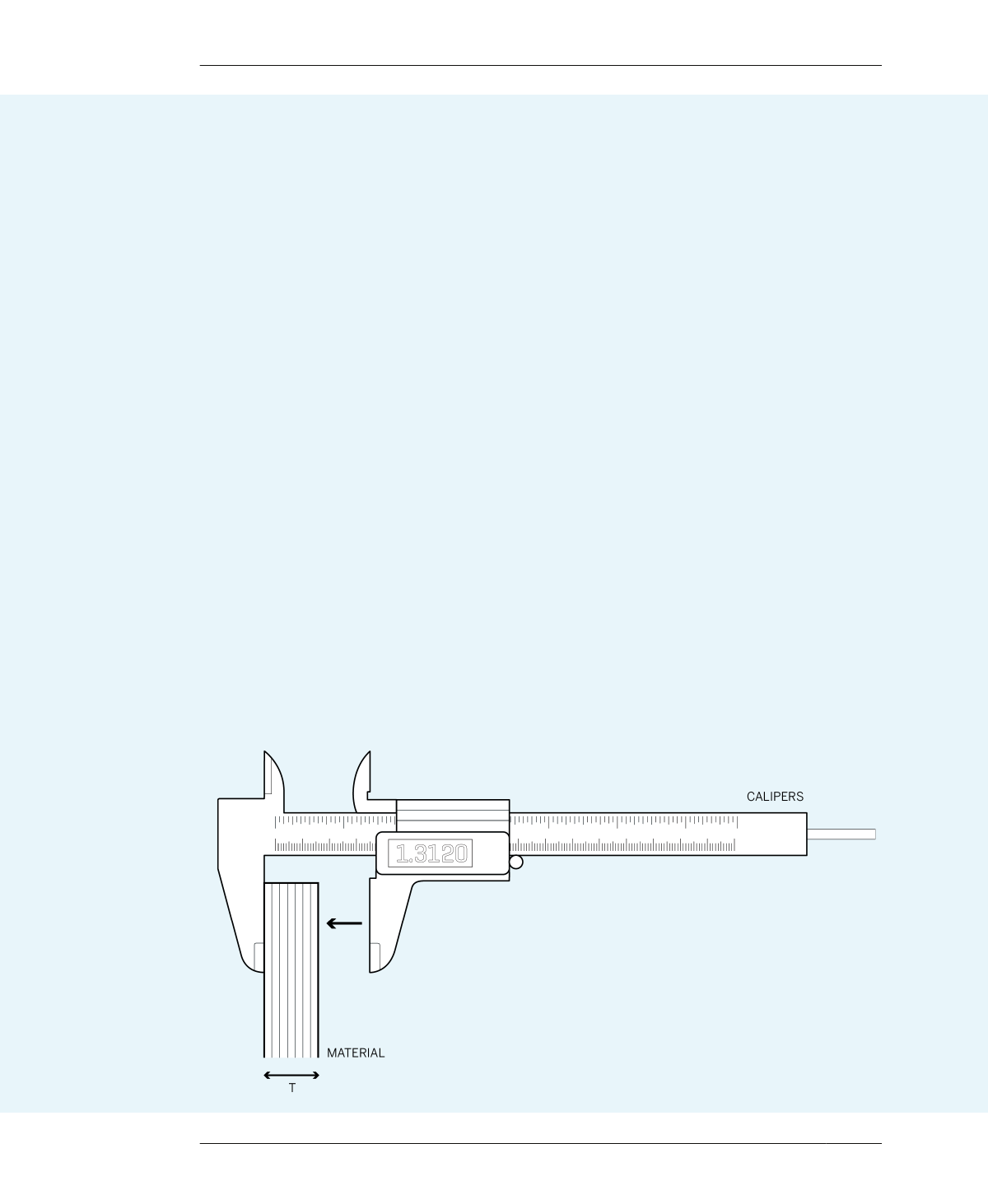
NOMINAL THICKNESS
FIGURE 5-2
Measuring material
with digital calipers
CALIPERS
Calipers, shown in Figure 5-2, are an essential
tool for accurately gauging material thickness.
Calipers measure the distance between two
surfaces: either between the outside surfaces
of a material (large bottom jaws) or the inside
surfaces of an opening (small top jaws). While
tape measures and rulers are helpful with larger
dimensions, calipers offer more precise meas-
urements, particularly with smaller items.
These days, most calipers found in a shop are
digital, and they are capable of measuring to at
least a thousandth of an inch.
Measure Before You Buy
Always bring calipers (Figure 5-2) when you
shop for materials; you’ll need to measure the
thickness of different plywood grades and
sheets before you buy.
Plywood sheet thickness can vary from batch
to batch, sheet to sheet—and even within each
sheet itself. To ensure that the materials you’re
buying have an aproximate matching thickness,
take some base measurments and use them to
help make your selections.
Most of the projects in this book use more than
one sheet; the Cellular Screen in Chapter 16
uses seven. When you’re working on multiple-
sheet projects, try to find some consistency
across all sheets.
Even if you’re only buying a single sheet at a
lumber yard or big box store, get your money’s
worth and avoid project pain. Large sheets of
plywood that you can barely maneuver yourself
may seem like difficult items to inspect for
warping, voids, and face quality—but you’ll
regret it if you don’t. Remember that they want
to sell you wood. It’s not exactly cheap, and you
should be picky. Just start going through a pal-
let; employees always show up to help.
Once you have a sheet off the rack or out of the
pile, turn it on its long edge and look down the
length to ensure that it’s not too badly warped.
Warped material is harder to hold down,
doesn’t machine well, and can lead to broken
tooling.
130
DESIGN FOR CNC
